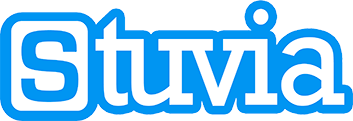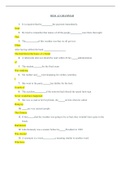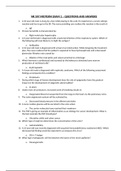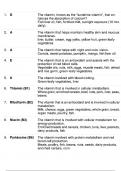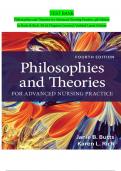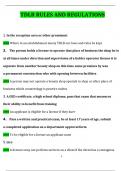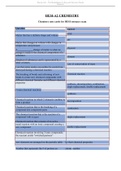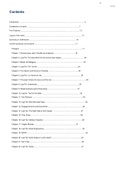VERIFIED SOLUTIONS
Teratogens - ANS-Birth defect/appearance anomalies causing agents that are present in prenatal
environment; account for majority of adverse INTRAUTERINE effect not related to genetic factors.
*most serious when structure is forming.
exp) Fetal Alcohol Syndrome, Zika Virus, Drugs (Dilantin, Coumadin, Accutane), Chemicals (Cocaine,
Lead), Infections (Rubella), Metabolic Agents (Maternal PKU)
Pre-Term Infants & Problems - ANS-Occurs in about 1-8 pregnancies; leads to 75% of early neonatal
mortality and morbidity.
Hard to tell if there even is an infection d/t immature immune system.
-Poor Thermoregulation: cannot keep stable temperatures due to minimal subcutaenous fat deposits.
-Immature CNS (frequent apnea & hypoventilation & bradycardia)
-Immature immunity (infection)
-Intraventricular Hemorrhage (d/t trauma, asphyxia)
-Immature cardiopulmonary system
-Immature GI system (NEC)
-Jaundice
-Glucose Instability (HYPOGLYCEMIA)
-"Relaxed Limbs", Easily Folded Ears
-Partial Reflexes (sucking, swallowing, gagging, coughing)
-Large head in relation to the body
Intraventricular Hemorrhage (IVH) - ANS-Bleeding into the ventricles inside the brain.
Risk Factors:
-Extreme Prematurity
-Birth Asphyxia & Vigorous Resuscitation
-Mechanical Ventilation
-Sudden Change in BPs; result of rapid hypertonic volume expansion
Management:
-Identity and reduce risk factors!
Thermoregulation - ANS-Preterm babies have:
, -Immature vasculature tone
-Disproportional body surface to body weight
-Immature, gelatinous skin with decreased subq fat
-Decreased fat = poor insulation & heat conservation
Management:
APPLY EXTERNAL WARMTH! ESSENTIAL TO SURVIVAL!
Respiratory System - ANS--Surfactant Deficiency: Surfactant - surface-active phospholipids secreted by
alveoli. Reduces surface tension of fluids that line alveoli and the respiratory system, resulting in
uniform expansion and maintenance of lung expansion. Deficient surfactant production causes unequal
inflation of alveoli on inspiration and the collapse of alveoli on expiration.
-Respiratory Distress Syndrome (RDS) -
SYMPTOMS: Tachypnea then Dyspnea, Accessory Muscle Use, Fine inspiratory crackles, Audible
Expiratory grunt, flaring of the external NARES, Cyanosis, or Pallor.
Management: Adequate Oxygenation, Ventilation, Supportive Care and Measures required for any pre-
term infant!
-Immature Neurological Control Center = Secondary Apnea
Management:
-Intubation & CPAP & O2
-Administration of Exogenous Surfactant (Surfactant Replacement Therapy)
-Serial Chest X-Rays, Continuous Monitoring: Cardiorespiratory status, Pulse Oximetry, BP, ABG
-Prevention of Preterm Delivery
-RDS & Surfactant Deficiency are SELF LIMITING; improved by 72 hours in the absence of complications.
NEC (Necrotizing Enterocolitis) - ANS-Acute inflammatory disease of the bowel; portion of the bowel
undergoes necrosis. Most common GI disorder in premature infant.
Cause uncertain; associated with infants whose GI tracts have experienced Vascular compromise.
Clinical Presentation:
-UNSTABLE TEMPERATURE! (Subtle & Progressively worse)
-Abdominal Distention
-Increased Residual within the stomach (prior to feeding, check how much residual is left; increased
amount = lack of absorption via the Intestines)
-Lethargy
-Blood Glucose Instability
-Feeding Intoerlance
Management:
-STOP ALL FEEDINGS
-Abdominal Decompression via NG Suction & early TPN!
-Administration of Wide-Spectrum ABX IV
-Avoid Pressure on abdomen: left un-diapered & positioned supine or on the side.
-INFECTION PRECAUTION!
-Serial Abdominal X-Rays & Frequent Labs
